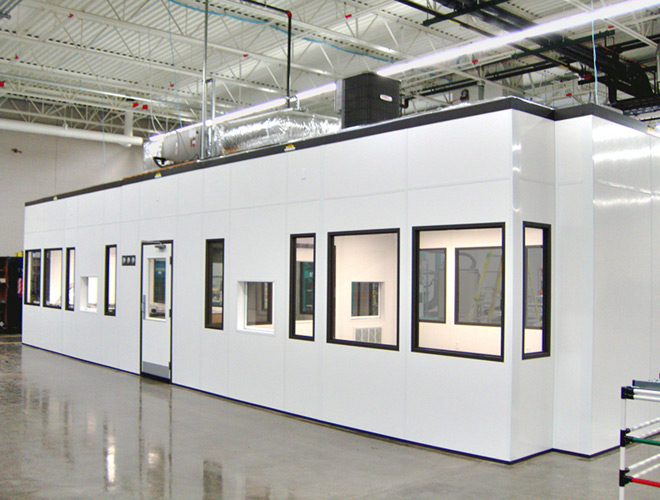When it comes to designing a new cleanroom, the biggest, and possibly first decision you’ll have to make is whether your cleanroom will be modular or traditionally constructed. There are benefits and limitations to each of these options, and it can be difficult to determine the right choice for your cleanroom application. Here’s our take on modular cleanrooms vs traditional construction.
Flexibility
For applications requiring flexibility, modular construction is your best bet. Traditional construction can’t be packed up and moved to another location. Nor is it as easy to expand as modular construction where adjustments are minor, such as detaching a few panels and adding more to them. Instead, you have to totally renovate, knocking out walls, etc. Depending on your cleanroom use and classification, you could have a super-flexible Softwall cleanroom, which has impermanent curtain-like walls or a Rigidwall or Hardwall cleanroom, with thicker, more substantial wall panels.
While it might seem like traditional construction is more impervious and more permanent that modular construction, Hardwall and Rigidwall cleanrooms are just as impermeable to contaminants as traditional walls, ceilings, and floors.
Cost
Depending on the size, budget, classification, and application of your cleanroom, modular construction may be less expensive than traditional construction. This is especially true of smaller cleanrooms or those that are impermanent. For applications like clean storage, which may require only a small space and adhere to the least stringent cleanroom classifications, a Softwall cleanroom may be the best option, as it typically falls at a lower price point than construction.
Installation
While traditional construction can take months from start to finish, modular construction is a much simpler process, as all the components are already manufactured. Instead of having to build walls from raw materials, with modular cleanrooms, the components simply need to be assembled to your specifications. Modular construction can take as little as a few days or weeks to complete, which is crucial to getting your operations up and running as soon as possible.
Additionally, while you’ll always need to hire pros for traditional construction, a modular cleanroom can often be assembled in-plant by your own staff, with the instructions provided by the manufacturer. The manufacturer may even offer installation services at a slight additional cost or as part of a modular cleanroom design package.
If you’re designing a cleanroom, get in touch with Angstrom Technology to see how our modular cleanroom designs are the right option for your cleanroom.


